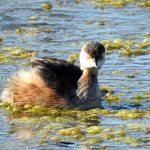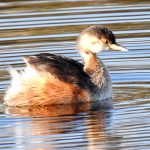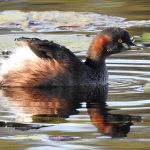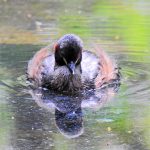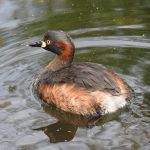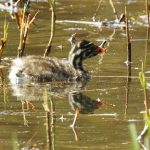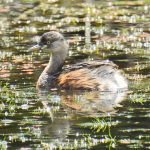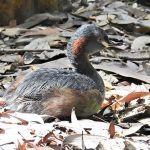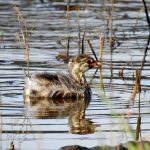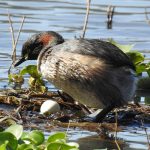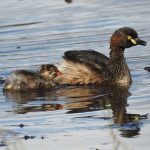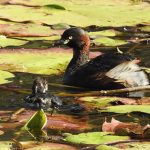AUSTRALASIAN GREBE
Australasian Grebes are small waterbirds, measuring around 25-27 cm in length. They have a distinctive appearance with a dark crown and nape, reddish-brown eyes, and a striking golden-yellow patch on their face during the breeding season. Outside the breeding season, their plumage becomes more subdued.
The Australasian Grebe is found across a wide range of habitats in Australia, including both freshwater and brackish water bodies. They inhabit a range of freshwater environments, including lakes, ponds, rivers, swamps, and estuaries. They are particularly fond of wetlands with dense aquatic vegetation, which provides them with cover and nesting sites.
Australasian Grebes are carnivorous and primarily feed on aquatic invertebrates, such as insects, crustaceans, and small fish. They are skilled divers and can spend extended periods underwater in search of food.
During the breeding season, these grebes engage in elaborate courtship displays. They build floating nests made of aquatic vegetation, often anchored to submerged vegetation to keep them stable. Both the male and female share incubation duties, with the eggs hatching after about three weeks.
Once the eggs hatch, both parents continue to care for the young grebes. The chicks are born covered in down and are often carried on their parents’ backs for protection and warmth. They learn to swim and forage with the guidance of their parents.
These grebes are not particularly vocal birds, but they do produce various soft calls and whistles, especially during the breeding season when they communicate with their mates and young.
Australasian Grebes are proficient swimmers and divers, but they are less skilled flyers. Their small wings make them relatively weak fliers, and they often prefer to escape danger by diving and swimming underwater.
While they are active during the day, Australasian Grebes are known to be more active at dusk and dawn. They may also be active at night, particularly during the breeding season.
Like many waterbirds, they can be affected by habitat loss and degradation due to wetland drainage and pollution.

